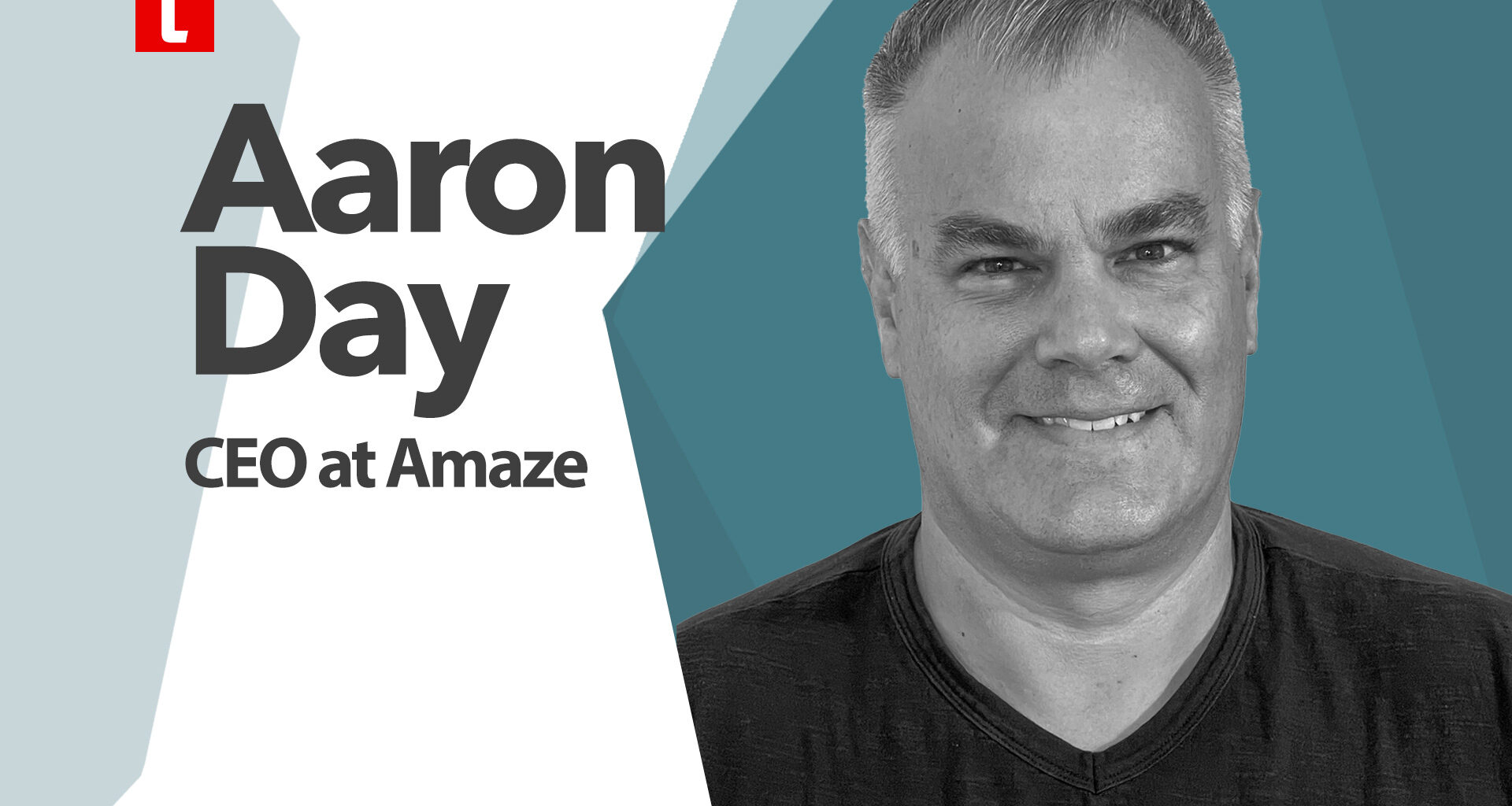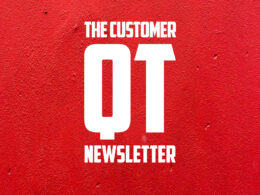Aaron Day is CEO of Amaze and presides over a company with a suite of tools that are accelerating retailers’ entree into truly immersive experiences in the 2D, 3D and metaverse worlds. We sat down recently to talk about Amaze’s history and offerings, where and how retailers can apply these unique tools, and some of the trends he sees that retailers should be aware of and taking advantage of – and in some cases – avoiding altogether.
Full transcript below.
TheCustomer: Tell us about Amaze. What exactly is it?
Aaron Day: So, it is one of my, one of my favorite stories to tell, because it’s a very interesting sort of marathon this company has gone through. So, the new name of our company since January up until the end of last year was known as Famous Industries. And really the companies had two sort of two major experiences. The first five, six years of the company was a very large, online agency focused on mobile experiences, mobile shopping experiences. If you look at the customer base that the company served pretty much, every fortune 500 company was served at one time or another either by the Famous Industry software or by an agency that was using the software. Along the way, some investors came along and said, Hey, look, what you guys do is very, very, very cool, very, (and) very much needed in the mobile commerce space.
Why don’t you build some do it yourself software to support people who want to do this on their own. So the company embarked on a path and over a four or five year period just built enormous amounts of tech under the hood. Ttech today, that’s great for the 2d shopping experience for 3d shopping experience, all kinds of things that are starting to come out. I was brought on board last September as a CEO of the business to take all this great tech that was built and bring it to market, you know, really just sort of streamline the strategy, bring it to market, build out a team that could scale and support sort of massive user growth based on just the foundation of what was built over a period of time.
So, um, first thing we did was build up senior leadership team, and then we changed the name because, as you can imagine, trying to optimize “famous” and, and SEO is very difficult. <laugh>, everybody’s famous somehow. And that’s, that’s sort of my story. So the company today – here’s our tagline – we enable anyone to sell anything anywhere with simple tools that connect. And that’s really what we’re focused on is just, is just really bringing sellers together with markets and catalogs and reach with very simple tools that require no coding and just simple to use. So that’s, that’s our focus.
TheCustomer: How does Amaze work? What does the technology do?
Aaron Day: Yeah, it’s really, it’s really pretty powerful. What’s under the hood from the simple animation and transition tools that we have allow you to create really dynamic mobile experiences too. We have this product called realtime preview where you can actually be designing something and share it with all your peers and colleagues and as you update it and see how products will perform, you can see it in real time – is very, very powerful. And you know, I’m never gonna be happy with how simple it is to use, but it’s getting simpler and simpler to use it every day. I really want my five year old son to be able to go on and create something that he can sell on the tool within a couple minutes. And we’re not quite there yet, but we’re getting there.
TheCustomer: What is Amaze’s unique value proposition?
Aaron Day: There’s lots of different software tools out there that are focused on either either a component of a commerce channel or a component of a commerce stack. We really view ourselves as like the head of all these headless commerce stacks – that connecting front end, but we’re taking an approach where we look at it like we’re an aggregator. So we know what we do really, really well, but our software is designed in a way where if we don’t do something, we can aggregate components in very quickly. So we have lots of strategic partners that are either there today, or that are going to be announced over the next few months. And those things just add more capabilities, very simply with our user interface to the merchant, trying to sell something. Right. And that’s the approach that I think is gonna help us massively scale because we realize selling online is really hard still today, selling on mobile is even harder.
And so some of the things you need, we’re just not gonna be able to build ’em fast enough. So we’re aggregating them. And that’s the other piece that I love about our tech is that it’s so modern. Things can be added very quickly. And we don’t have to be the actual developer of the software.
TheCustomer: Let’s talk about stack integrations
Aaron Day: So, yeah, so it started off as building blocks, right? We weren’t that good on the API side. We’re getting better at it. Really, the piece that we’re hyper focused on is what I call selling experiences. So if you look at most websites today everybody’s focused on driving traffic back to a website, to a landing page. We’re very focused on the opposite. We want to help that merchant grab their inventory, grab all their product data, grab their shopping cart, combine it into a really beautiful experience and sell it anywhere.
So, one of the things you, if you talk to our merchants, you talk to some of our customers, what they tell you is probably within about three minutes, they can take the latest product that they have, like a like a spring fashion catalog or spring furniture catalog, they link to it with some of our software that grabs the data, pulls it into a design, and then they can publish it to social channels, to marketplaces, to their own website. And so we are very focused on what I call selling pages and that selling page can live anywhere. And so anything that’s a building block to that we care a lot about. Because we feel like where you sell something today is changing rapidly. And so whether you put it on your own website or your own storefront, or put it someplace else, it needs to connect very quickly. So when you think about blocksthat let you publish anywhere are things that we really focus on.
TheCustomer: What was your path to CEO of Amaze?
Aaron Day: Yeah. So pretty much I hadn’t thought about this until I joined the company.You know, looking back over my career, I pretty much have been disrupting online design, online publishing, online retail all my life. So I spent 10 years and working for a company that was really focused on automating online publishing, working with large agencies and large publishers. And just trying to figure out how you communicated things better in the publishing space. And then I actually worked in a large industrial (company), I was CEO of a very large industrial manufacturing company that was very much focused on retailers and everything we did was focused on real time production for retailers and getting them product as fast as possible. Got back into software a bit, you know, looking at like personalization software (and) had an amazing, amazing two and a half year experience with Canva.
I (don’t) know how much you know about Canva, but I was one of the first people to join Canva in the sort of their growth era, and did a lot there. And, that really brought me to that. That’s really how I got connected with the people at Amaze. It really is focused on a design engine that powers commerce. So most of my life has been really focused on helping people either publish something better or helping retailers get online and just be more efficient, you know, and so this is the perfect, perfect place for me.
TheCustomer: What trends do you see that retailers should know about?
Aaron Day: I think we’re at this very interesting time in commerce where brands really need to think about how they communicate with their customers in a way that you always have to drive value. But I think the trend that’s happening is, is where does the communication come from? And, how do you align all these sort of channels that promote your brand? And it’s very unique. And if you’re a small to medium size brand or merchant, I think the trend that you have to really be focused on is that first point of connection with your customer. Unlike anytime in history, I mean, people might have said, well, I lost touch with my customer if I started selling on Amazon, or if I started selling on, another channel, but reality is that you were promoting your brand in that channel.
Now it’s changing rapidly. And, you’ve got this whole dynamic of makers and creators and influencers, and also becoming the brand ID in a customer’s customer’s mind. And I think it’s a very interesting scenario. And I think that’s a trend that I pay a lot of attention to because we’re trying to define who our customer is. And are they the people actually making a product or making a service, or are they the ones promoting the service? Right. It’s very interesting for me to watch it.
TheCustomer: What about retailing in the Metaverse?
Aaron Day: So, if you’re a big retailer or merchant, you have to be focusing on scale, right. So, if I’m gonna offer a new buying experience to my consumer, wherever they’re gonna buy something, I have to be able to scale it. So, I think the biggest challenge with the metaverse and, and sort of 3d shopping has been the fact that you have to use a lot of CG X and custom design to create a product experience in the metaverse, which is very time consuming. So, one of the things that we focus on is programmatic updates or programmatic designs in the metaverse. So you’ll see later – I can’t can’t tell you who it is right now – you’ll see later this year, a very, very large retailer launched a beta with us where everything that you see in their 2d e-commerce shopping experience is being displayed in a 3d metaverse shopping experience. And they’re testing it in a way where they wanna see if can they programmatically feed that data fast enough to where itdoesn’t really matter whether I’m going on the .com site to buy something, or if I’m going to the metaverse site.
So, what I advise retailers to think about is – look, it’s a great marketing ploy to say, ‘Hey, come in here and buy your kids’ backpack for back to school.’ And play around in this virtual shopping experience. But if you can’t turn 20,000 product skews on and let that customer buy in a meta experience versus a 2d, you know, eCommerce experience, they’re not gonna stay there. Right? So, for us, as a retailer, you either realize it’s a marketing employee and you test it and build some brand awareness around it, you go heads in and you decide you’re going to create a complete shopping experience. And that requires some programmatic capabilities that are still very much in the very beginning stages of development for most companies, right?
So that’s how I feel about it – I think there’s a lot of value. I think the other thing (that) is gonna happen is not just in the US market, but global markets – I think you’re gonna see a much quicker adoption of retail in the metaverse and global markets, because the way people buy things are different in other parts of the world. And you don’t have all the physical stores that are accessible to you. So they’re just used to buying online and, and now they can actually get a better experience buying it in a 3d world because they can try things on in a virtual experience. Right. And it’s actually better than a 2d shopping experience, but they don’t have the option to go to the retailer and try something on. So, they’re just gonna go there, I think, faster.














2 comments